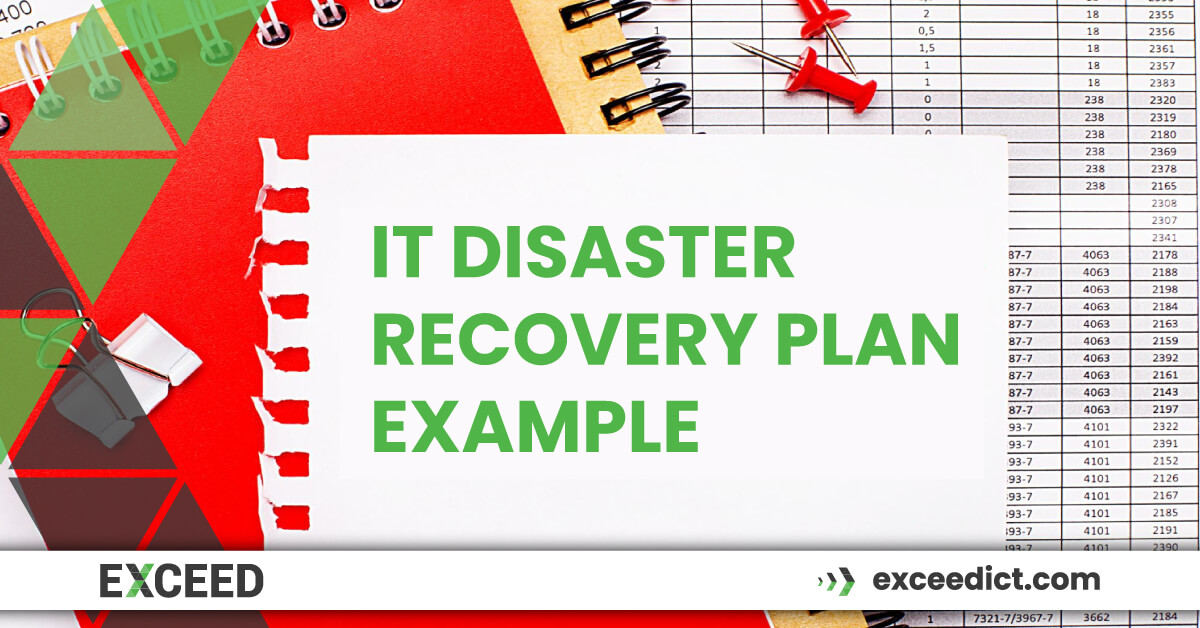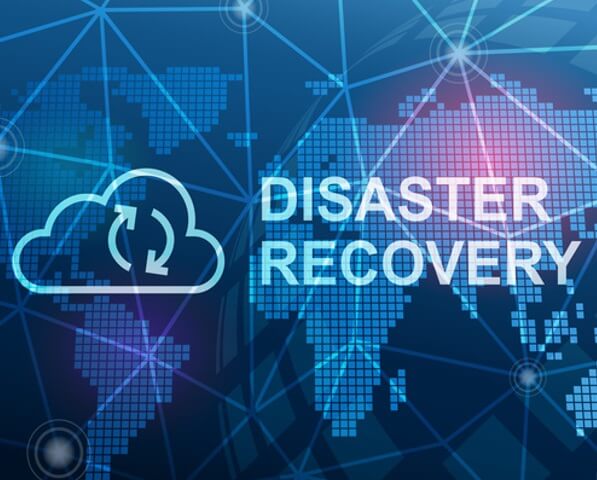
IT Disaster Recovery Plan Example: Ensuring Business Continuity
 In today’s digital age, businesses rely heavily on their IT systems for day-to-day operations.
In today’s digital age, businesses rely heavily on their IT systems for day-to-day operations.
However, the unexpected can happen, from natural disasters to cyberattacks, leading to potential disruptions. This is where an effective IT disaster recovery plan comes into play.
In this article, we will delve into an in-depth IT disaster recovery plan example that covers all aspects of ensuring business continuity.
By following this example, you can fortify your organisation against potential disasters and minimise downtime.
IT Disaster Recovery Plan Example

1. Assessing Risks and Impact
To start, evaluate potential threats such as data breaches, hardware failures, and power outages. Identify the impact these could have on your business processes and customer experience.
2. Defining Recovery Objectives
Determine recovery time objectives (RTOs) and recovery point objectives (RPOs) for each critical system. This helps in setting clear goals for recovery.
3. Establishing a Cross-Functional Team
Form a dedicated team comprising IT experts, communication specialists, and department heads. This team will be responsible for executing the recovery plan seamlessly.
4. Data Backup and Storage
Implement regular data backups, both on-site and off-site, using secure encryption methods. This ensures data integrity and availability during recovery.
5. Cloud Integration
Explore cloud solutions for data storage and application hosting. Cloud platforms provide scalable resources and redundancy, enhancing disaster recovery capabilities.
6. Network Infrastructure Redundancy
Design your network architecture with redundancy in mind. Redundant internet connections and failover mechanisms minimise connectivity disruptions.
7. Application Prioritisation
Categorise applications based on criticality. This enables focused recovery efforts, ensuring essential services are restored swiftly.
8. Communication Protocols
Establish communication protocols to notify employees, customers, and stakeholders during a disaster. Maintain up-to-date contact lists and multiple communication channels.
9. Regular Testing and Drills
Conduct mock disaster scenarios to test the effectiveness of your recovery plan. Regular drills identify gaps and allow for continuous improvement.
10. Vendor and Supplier Coordination
Ensure that your vendors and suppliers also have robust disaster recovery plans. This prevents bottlenecks in the recovery process.
11. Employee Training
Educate your workforce about the IT disaster recovery plan. Everyone should understand their roles and responsibilities during a crisis.
12. Continuous Monitoring and Updates
Regularly review and update the recovery plan to align with evolving technologies and business needs. A static plan may become ineffective over time.
13. Financial Considerations
Allocate budgetary resources for disaster recovery initiatives. This investment ensures the necessary tools and technologies are in place.
14. Regulatory Compliance
Adhere to industry regulations and compliance requirements. Ensure that your recovery plan aligns with legal standards.
15. Documentation and Documentation
Thoroughly document every aspect of your IT disaster recovery plan. This includes procedures, contact details, and system configurations.
16. Post-Recovery Assessment
After a disaster, evaluate the recovery process’s effectiveness and identify areas for improvement.
17. Case Study: Real-Life Success Story
Explore a real-world example of a company that successfully executed its IT disaster recovery plan, showcasing the positive impact on business continuity.
18. Lessons Learned
Understand the key takeaways from the case study, and learn how these lessons can be applied to your own organisation.
Frequently Asked Questions (FAQs)
How often should an IT disaster recovery plan be updated?
Regular updates are crucial, ideally annually or whenever there are significant changes in your IT infrastructure.
Can small businesses implement robust disaster recovery plans?
Absolutely. Tailor the plan to your business size and needs, focusing on critical assets and processes.
What role does cloud technology play in disaster recovery?
Cloud solutions offer flexible and scalable resources, aiding data backup and application recovery.
How long does it take to recover from a major IT disaster?
The duration of recovery can fluctuate depending on the specific characteristics of the catastrophe and the efficiency of your preparedness strategy. This span can extend from mere hours to a span of days.
Can outsourcing IT services include disaster recovery?
Yes, managed service providers often offer disaster recovery as part of their services.
Is employee training essential for disaster recovery?
Employee training is vital to ensure everyone knows their roles and can respond effectively during a crisis.
Crafting a robust IT disaster recovery plan is essential for safeguarding your business against potential disruptions. By following the comprehensive example outlined in this article, you can build a resilient strategy that ensures business continuity even in the face of adversity.
Remember to regularly update and test your plan to stay prepared for any challenges that may arise. With careful planning and implementation, your organisation can navigate through disasters with minimal impact.
You may also like to know more about
- IT Disaster Recovery Planning Process for Ensuring Business Continuity.
- Disaster Recovery Plan For Ensuring Business Continuity in Challenging Times.
- Business Continuity Planning vs Disaster Recovery Planning.
- Step by Step Guide for a business continuity plan.
- What is Business Continuity Planning? Importance, Risk Assessment, & Core Objectives.
- Understanding the Disaster Recovery Planning – steps, benefits and best practices.
- Disaster Recovery Planning To Ensure The Connectivity in Crisis.
Stay connected with EXCEED ICT
Stay connected with EXCEED ICT by joining our social networks (given at footer). Get the latest updates, news, and tips for enterprise device deployment. Follow us on Twitter, Facebook, and LinkedIn for the best enterprise device deployment solutions.
Help us to improve our enterprise by rating us on Google Maps. Your feedback and comments are valuable to us and will be used to make our services even better.


